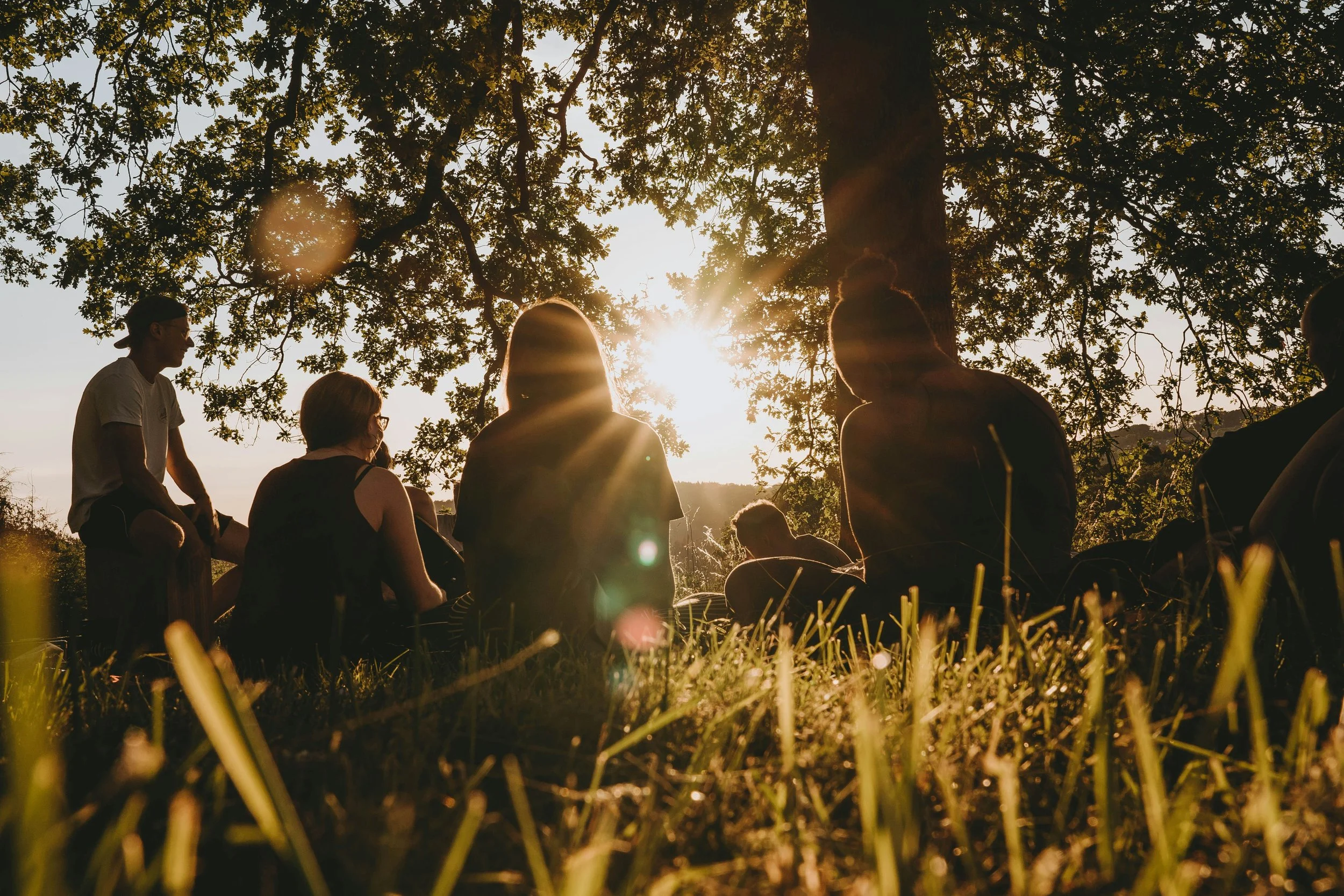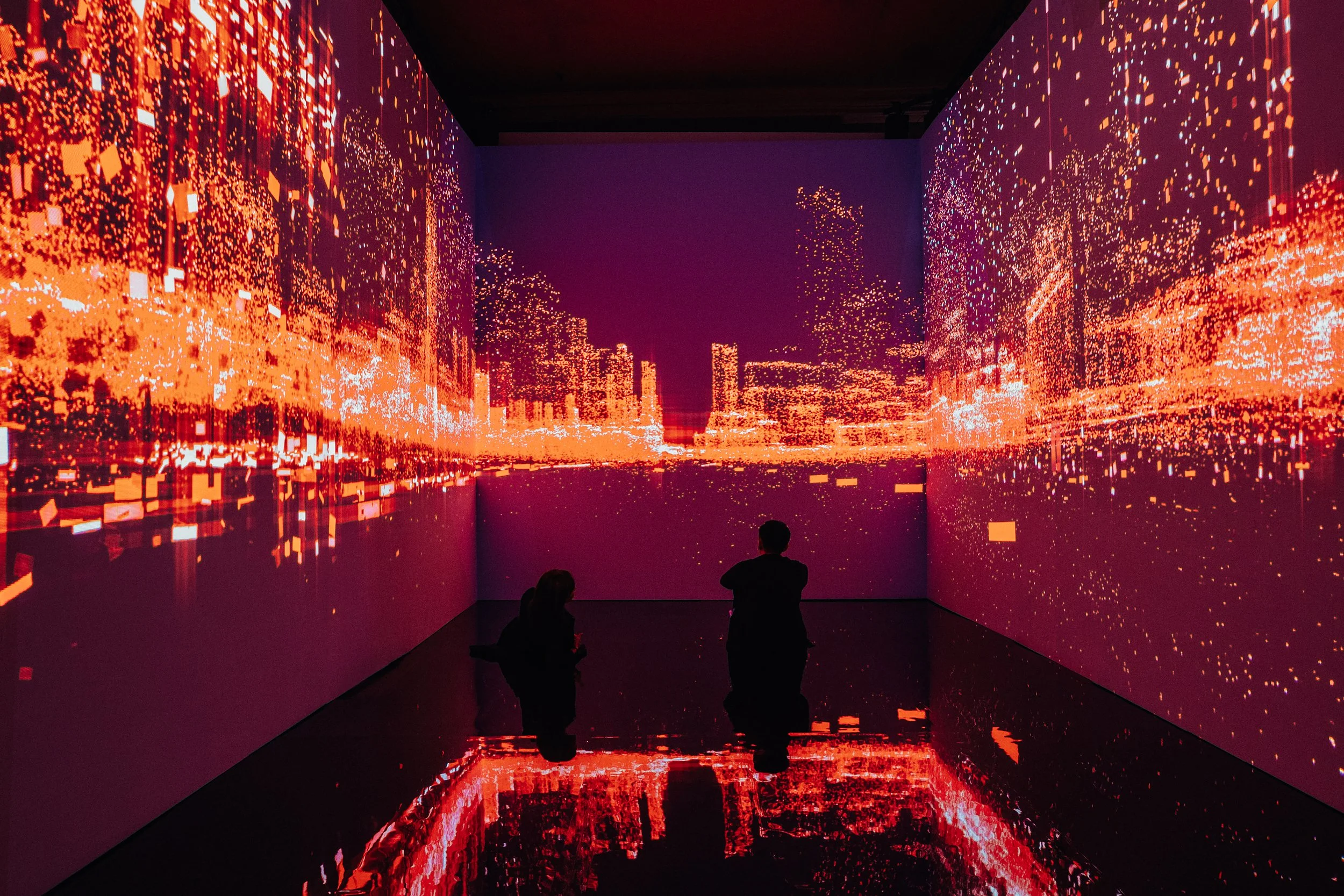The best national pavilions at the 2024 Venice Biennale
Ah, the Venice Biennale – it seems to come about so quickly, and the opening week is over just as fast. Thankfully, the Biennale runs all the way until November, giving you ample time to visit (or return) at leisure. With so much to see and do across it’s many distinct neighbourhoods, it can seem an impossibly daunting task. Begin at the Giardini and the Arsenale, of course, but don’t miss out on some of the wonderful pavilions further afield. We’ve chosen just a few of our favourites, including some big hitters alongside several less obvious, to get your teeth into and add to the list…
AUSTRALIA – kith and kith
The worthy winner of this year’s Golden Lion, the Australian Pavilion is a stunning, emotive installation by Kamilaroi and Bigambul artist Archie Moore, curated by Ellie Buttrose, curator of Contemporary Australian art at Queensland Art Gallery. In kith and kith, Moore reflects on the nature and strength of Indigenous kinship, issues of surveillance and incarceration, the enduring impact of colonisation and First Nations language revival. By immersing the viewer in both personal and universal stories, Moore reflects on Australia’s 254-year history within the 65,000+ year context of his Aboriginal family heritage.
The Pavilion has been completely transformed, and the presentation is a powerful and poignant exploration of his Kamilaroi, Bigambul, British, and Scottish ancestry, as well as a tribute to the fortitude and sovereignty of First Nations peoples. It also explores the ways in which Australia’s history is inextricably linked with the carceral system, from the British Empire’s establishment of penal colonies in 1788, to First Nations peoples in Australia being statistically some of the most incarcerated people globally today.
Archie Moore, kith and kin, 2024, Australia Pavilion at Venice Biennale 2024. Photograph: Andrea Rossetti. © the artist. Image courtesy the artist and The Commercial, Sydney.
NIGERIA – Nigeria Imaginary
The concept of Nigeria Imaginary comes from two points of departure. It explores the role of both great moments in Nigeria’s history—moments of optimism—as well as the idea of a Nigeria that could be and is yet to be. Nigeria Imaginary presents different perspectives and constructed ideas, memories, and nostalgias of the country, including an intergenerational and diasporic lens, to imagine a Nigeria for the future. Works range in many differing mediums, including painting, photography, drawing, installation, sculpture, AR, sound, and film.
The Nigeria Pavilion is curated by risen star curator Aindrea Emelife and features new site-specific works by eight artists: Tunji Adeniyi-Jones, Ndidi Dike, Onyeka Igwe, Toyin Ojih Odutola, Abraham Oghobase, Precious Okoyomon, Yinka Shonibare CBE RA, and Fatimah Tuggar. Set in the Palazzo Canal, in Venice’s historic Dorsoduro neighbourhood, walls peel, an indistinct sense of ageing rhymes with the overall feeling of potential, and a feeling pervasive in the understanding of Nigeria settles. Aesthetically, it appears to be in-between history, coming undone to reveal the beautiful state of an architectural relic. In expressing a national identity with a theme so focused on a collaged sense of personal histories and imagined ideals, the site allows for varied artistic articulations to come together as one to hold and unify the Nigeria Imaginary.
Fatimah Tuggar, Light Cream Pods (Excerpt), 2024. Installation view, Nigeria Imaginary at the Nigeria Pavilion at the 60th International Art Exhibition — La Biennale di Venezia. Image: Marco Cappelleti Studio. Courtesy: Museum of West African Art (MOWAA).
MALTA – I will follow the ship
Consisting of a newly commissioned artwork weaving together cultural heritage and cutting-edge digital technology, I will follow the ship by Matthew Attard incorporates contemporary drawing, historical references and digital technology, originating from Attard’s latest explorations into AI and digital technology as a form of drawing. The project takes its inspiration from Attard’s interest in historical images of ephemeral ship graffiti, many located on the facades of wayside chapels throughout Malta, thought to have been crafted by seafarers. These maritime graffiti resonate with many cultures whose relationship with the sea has been – and still is – crucial.
Seeking to dissect humanity’s relationship with artificial intelligence and digital technology, the title also hints at the interplay between “I” and “eye”, symbolising both the objective and subjective nature of Attard’s work. It also offers a parallel between these tangible historical drawings on stone and contemporary digital drawing – both of which we see in this pavilion, in the form of a monumental graffitied ‘wall’ and digital screens on which we bear witness to Attard’s adaptation of an eye-tracking device as a means for drawing. Taking the form of a multi-layered installation, with overlapping physical and virtual environments, the exhibition engagingly tackles aspects of authorship, perception, digitalisation and the hybridisation of humans and machines, and challenges our blind faith in techno-symbiotic relationships in response to the ever-growing use of AI.
Matthew Attard, I will follow the ship at the Malta Pavilion at the 60th International Art Exhibition — La Biennale di Venezia.
GREAT BRITAIN - Listening All Night To The Rain
Exploring post-colonialism, environmental devastation and the politics of aesthetics, Listening All Night To The Rain is John Akomfrah’s boldest and most ambitious commission to date.
The exhibition draws its title from 11th century Chinese writer and artist Su Dongpo’s poetry, which explores the transitory nature of life during a period of political exile. Organised in a series of song-like movements, or ‘cantos’, the exhibition brings together eight interlocking and overlapping multimedia and sound installations into a single and immersive environment that tells stories of migrant diasporas in Britain. It is the result of decades of extensive research by the artist and his team, using historical records to contextualise our experience of the present day. Weaving together newly filmed material, archive video footage and still images, with audio and text from international archives and libraries, the exhibition tells global stories through the ‘memories’ of people who represent migrant communities in Britain and examines how multiple geopolitical narratives are reflected in the experiences of diasporic people more broadly.
© Listening All Night To The Rain, Canto V by John Akomfrah. Image by Jack Hems.
FINLAND – The pleasures we choose
The Pavilion of Finland this year presents a multifaceted collaboration by artists Pia Lindman, Vidha Saumya, Jenni-Juulia Wallinheimo-Heimonen, curators Yvonne Billimore and Jussi Koitela, and architectural designer Kaisa Sööt. Titled The pleasures we choose, the exhibition creates a dialogue between three artists whose practices are acutely informed by their embodied experiences of structural, environmental and social imbalances in the world.
Bonded by their transdisciplinary practices which intertwine art, life and activism, the collective project spans performance, poetry, embroidery, drawing, sculpture and healing to reimagine the pavilion and the kind of art, bodies and experiences it can support. By connecting their works conceptually and materially through “access architecture” designed by Kaisa Sööt, visitors are invited to celebrate ‘the pleasure of the personal’ by embracing different lived experiences as a powerful means of inhabiting, imagining and remaking society as we know it.
Pia Lindman, Public Sauna at MoMA P.S.1, 2000. Detail, changing rooms divided by the curtain. Photo credit_ Grady Gerbracht. Courtesy the artist.
JAPAN – Compose
Known both in Japan and abroad for her sound installations and kinetic sculptures, Yuko Mohri represents Japan with two newly created site-specific installations. For the Japan Pavilion this year, Mohri exhibits two bodies of work that share the common element of water, filling the iconic space with sound, light, movement, and scent to create an environment that slowly and continuously changes.
Yuko Mohri’s practice is characterised by the transformative nature of ordinary objects and common situations. Her installation Moré Moré (Leaky) is originally inspired by various ad hoc efforts (bricolage) seen in Tokyo subway stations to stop water leaks. The service staff often use everyday items such as plastic bottles, buckets, and hoses to cope with the small “crises,” widespread in the city with frequent tectonic activities. Mohri artificially creates leaks and then attempts to fix them in this work, improvising with a variety of common household goods she found at antique furniture stores and flea markets in the vicinity of the Biennale site. Extending from the gallery to the pilotis is Decomposition, a multi-part installation that generates drone sounds and flickering lights from the electrodes inserted into fruits that convert their ever-changing moisture into electric signals. Sourced from the local grocers and farmers, the fruits’ internal states shift constantly, modulating the pitch of the drone and the intensity of the lights. As they ripen and wither, they start giving off the sweet smell of decay and are eventually gathered in the compost in the pilotis to serve as a source of other plant lives in the Giardini.
“Yuko Mohri: Compose”, 2024. Installation, Japan Pavilion at the 60th International Art Exhibition – La Biennale di Venezia. Photo by kugeyasuhide.
GERMANY – Thresholds
Borne out of alternative readings of history and the future, the contribution extrapolates realms of experience from the liminal. And for the first time, the German Pavilion’s presentation extends beyond the boundaries of the Giardini della Biennale to a further location: the neighbouring island La Certosa. Yael Bartana and Ersan Mondtag present their work in the pavilion building. As a kind of prelude to the German presentation on La Certosa, the voice of Louis ChudeSokei accompanies visitors when they arrive on – his sonic intervention Thresholds can be heard when crossing between jetty and land. And on La Certosa the idea of the threshold is extended in nonvisual contributions by Michael Akstaller, Nicole L’Huillier, Robert Lippok, and Jan St. Werner.
Thresholds are liminal spaces subject to a paradoxical intermediate order. They lead from one place to the next, and are both spatial and temporal connectors. The curatorial method adopted for the presentation is to link different artistic approaches and disciplines within a pluralist overall story-telling. Proceeding from the present as threshold, as transition, where past and future overlap, the artistic contributions deal with both the threshold as a place between different kinds of belonging and with the communities that inform this space of meanings.
Yael Bartana, “Farewell”, 2024 as part of “Light To The Nations”, 2022-2024. Photo by Andrea Rossetti. © German Pavilion.
HONG KONG – Courtyard of Attachments
In Courtyard of Attachments, artist Trevor Yeung explores personal experiences and observations of the relationships between humans and aquatic ecosystems. He draws from references that include his father’s seafood restaurant, pet shops, feng shui arrangements, and his childhood pet fish companions. In landscapes of fishless aquariums, Yeung places longing, desire, and power on display. His works contemplate absence and attachment as a way to comment on the systems that structure our lives while alluding to the current climate crisis.
Yeung was born in Guangdong but was raised, lives, and works in Hong Kong. In his practice, he excavates the logic of closed systems and the ways in which they create and contain emotions and behaviour. Fascinated by ecology, horticulture, and aquatic ecosystems, Yeung presents carefully staged objects, photographs, animals, and plants in his mixed media works to address human relationships and the artificiality of nature. In this exhibition, he invites us to consider the emotional disconnect and power dynamics that characterise society today.
Trevor Yeung: Cave of Avoidance (Not Yours), 2024. Installation view: Trevor Yeung, Courtyard of Attachments, Hong Kong in Venice, 2024. Photo: Elia Bialkowska, OKNO Studio.
The 60th International Art Exhibition, curated by Adriano Pedrosa, runs from 20 April to 24 November 2024, under the title "Stranieri Ovunque - Foreigners Everywhere." The exhibition focuses on artists who have moved between the Global South and the Global North.
Words by Tani Burns















































